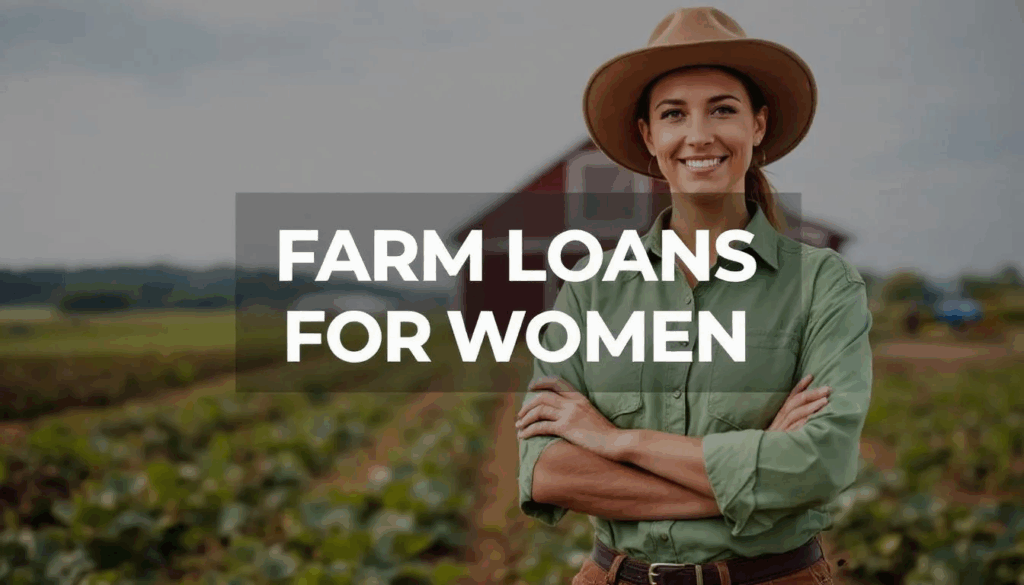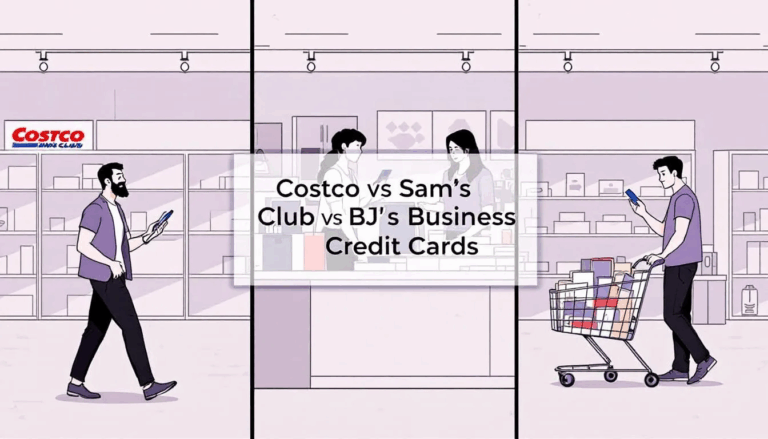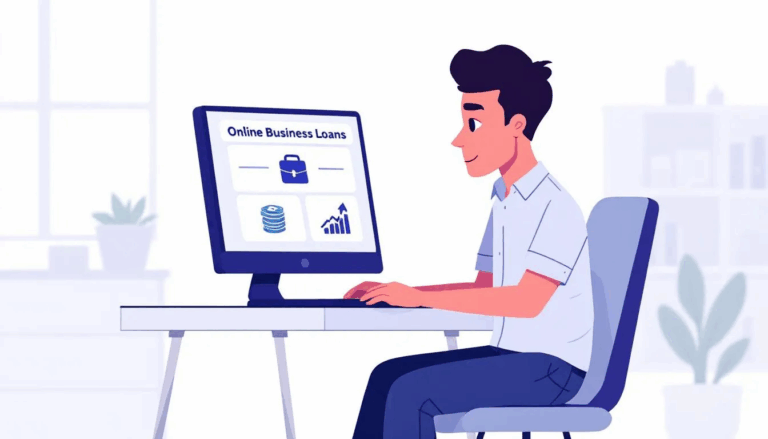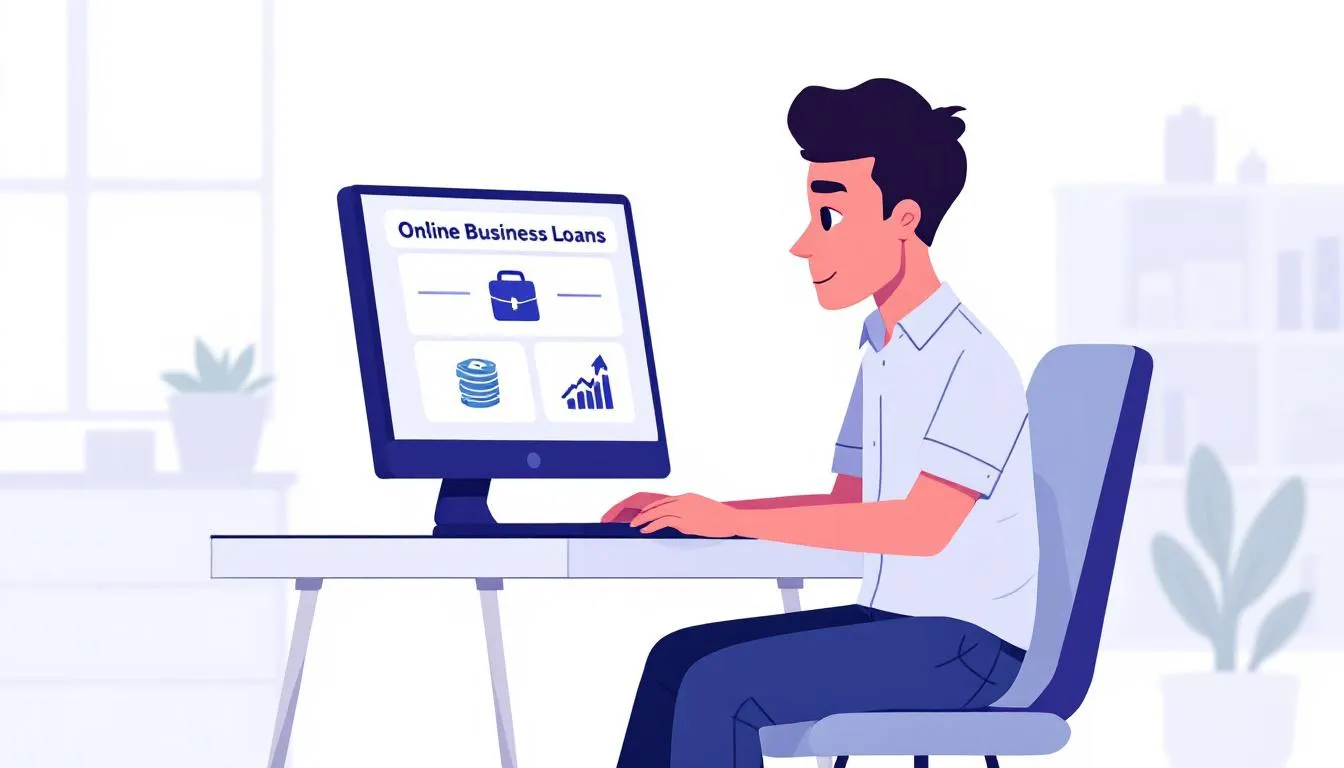What are Farm Loans for Women?
Farm loans are specialized financial products designed to support farmers and agricultural organizations across the US. Farm loans for women are specialized financial resources designed to help women farmers in their agricultural pursuits. These loans address the unique needs of women in agriculture, providing essential funding for their farming operations and business expenses.
Despite facing challenges in accessing funding, women-owned farms and women farmers play a significant role in the agricultural sector. Tailored financial solutions like farm loans for women are crucial in empowering and sustaining the growth of women in agriculture.
Typical uses of farm loan funds include:
- Supporting capital investments
- Purchasing land
- Buying farm resources and materials (soil, fertilizer, feed, etc.)
- Purchasing farming and agricultural equipment (tractors, trashers, bailers, etc.)
- Encasing soil and water resources
- Covering operational costs during the offseason
- Hiring farmhands during the business season
How do Farm Loans for Women work?
Women farmers and ranchers have various options for securing loans for their agricultural ventures, such as purchasing a family farm. These loans offer competitive interest rates and flexible repayment terms, making them attractive choices.
SBA Loans
Women farmers looking to start or expand their businesses can benefit from Small Business Administration (SBA) loans tailored to their needs. Among the best SBA loans available for women farmers are the SBA 7(a) loans, which provide funding for various purposes such as purchasing land, equipment, or livestock.
SBA loans are partially backed by the government, offering lower interest rates than traditional loans. However, the SBA doesn’t provide direct loans. You must apply to an SBA-approved lender, which could be a bank, credit union, or alternative financing facilitator (like UCS). SBA financing options typically come with fixed monthly loan payments.
SBA Express loans offer a quicker funding turnaround time, making them ideal for women farmers looking for immediate financial assistance. The SBA can approve SBA Express loans within 36 hours, but the actual funding time can still take a couple of weeks.
SBA microloans can be an excellent option for those seeking smaller loan amounts, providing up to $50,000 to help women farmers cover operating expenses or purchase supplies. Consider your needs when choosing the best loan program.
FSA Loans
Farm Service Agency (FSA) loans offer valuable financial support to women farmers looking to expand their agricultural operations or invest in new equipment. These loans provide access to much-needed capital, allowing women to purchase land or livestock, make necessary improvements to their farms, and cover family living expenses. FSA loan options require working with a commercial lender.
Access to capital for women farmers has improved over the last few decades, allowing for more business opportunities. Women farmers have received over $3.4 billion in loan capital from FSA in the past 25 years. Over 200,000 beginning farmers, including women, have secured farm loans through targeted lending programs.
FSA farm loan programs include:
- Direct Operating Loans: These loans provide funds for routine farm expenses, including purchasing feed, seed, fertilizer, and necessary equipment to keep operations running smoothly. Youth Loans are a specialized type of FSA Operating Loan designed for young farmers ages 10 to 20 who are working on an educational agricultural project.
- Direct Farm Ownership Loans: Targeted at socially disadvantaged producers, including women and beginning farmers, these loans can assist in buying family farms. Borrowers are required to contribute a small portion of the purchase price, while FSA provides the majority of financing, with the remainder sourced from additional lenders.
- Microloans: Small-scale loans of up to $50,000 that help women farmers cover operating or ownership expenses. Microloans are ideal for new or expanding farmers managing smaller operations with less complex financing needs.
Additionally, FSA loans often come with favorable terms and interest rates, making them an attractive option for women in the agricultural industry. Per the USDA, while the FSA has a statutory obligation to service all farmers, it targets a portion of guaranteed loans, direct operating and direct farm ownership loans, microloan funding, and youth loans to historically underserved and socially disadvantaged farmers. These include:
- Women
- African Americans
- Alaskan Natives
- Native Americans
- Hispanics
- Asians
- Native Hawaiians and Pacific Islanders
USDA Loans
USDA loans are a key resource for women farmers looking to start, expand, or recover their agricultural operations. These loans offer favorable terms and support for a variety of farming needs, from purchasing land and equipment to improving infrastructure. USDA programs are designed to make financing accessible, particularly for small and beginning farmers.
Common types of USDA loans include:
- Emergency Loans: Emergency loans can help farmers affected by natural disasters assess their losses and recover operations. These loans provide critical financial support when unexpected events disrupt farm operations.
- Microloans: Microloans are designed for small and beginning farmers, providing funds with less paperwork and fewer requirements. They can be used for operating expenses, equipment, or minor improvements.
- Marketing Assistance Loans: Marketing Assistance Loans provide interim financing at harvest time to address cash flow needs, helping farmers manage seasonal fluctuations in income.
- Storage Loans: Storage loans help producers build or upgrade farm storage and handling facilities, ensuring crops can be safely stored until market conditions are favorable.
- Commodity Loans: Commodity loans provide producers with cash flow assistance without the need to sell commodities at low prices during harvest, helping stabilize revenue.
Business Term Loans
Business term loans can be a valuable financial tool for women farmers looking to expand their operations, invest in new equipment, or purchase additional land. Term loans provide a single lump-sum cash injection and are paid back in regular installments over a fixed period. These loans typically have fixed terms and interest rates, providing predictability for budgeting and planning.
Women farmers can use term loans to finance long-term projects to help grow their businesses and increase profitability. Women in agriculture can overcome financial barriers and achieve their agricultural goals by accessing these loans.
Equipment Financing
Equipment financing can be a crucial tool for women farmers looking to invest in machinery and technology to improve their agricultural operations. Equipment financing allows farmers to use the asset being purchased as collateral for the loan. Access to financing can help women farmers overcome financial barriers and expand their businesses.
By securing farm equipment financing, women farmers can increase productivity, reduce labor costs, and ultimately enhance their overall efficiency in the farming industry. Additionally, equipment financing can allow women farmers to stay competitive in the market and adapt to changing agricultural trends.
Business Line of Credit
A business line of credit is a flexible financing option that allows women farmers to manage cash flow, purchase supplies, or cover unexpected expenses. Funds are not distributed in a lump sum; instead, farmers can draw what they need, pay it back, and borrow again as operations require.
A business line of credit allows farmers to draw funds as needed, similar to a credit card but with lower interest rates. This makes it particularly useful for handling seasonal costs or bridging gaps between planting and harvest when revenue is delayed.
Invoice Financing & Factoring
Invoice financing and receivables factoring are two tools that help farmers access cash tied up in unpaid invoices. Both options convert receivables into working capital, but they operate slightly differently.
Invoice financing allows farmers to borrow against the value of their unpaid invoices. In contrast, invoice factoring involves selling invoices to a lender or factoring company at a discount, transferring the collection responsibility to the lender. Both approaches provide quick access to funds, helping women farmers manage cash flow, invest in operations, and respond to new opportunities without waiting for customers to pay.
Why is it more challenging for Women to get Farm Loans?
Studies have shown that female farmers are less likely to receive loans compared to their male counterparts due to biases in the lending process. The lending process has traditionally favored male farmers, making it challenging for women to acquire loans due to stringent eligibility requirements.
This systemic issue highlights the need for greater fact-based approaches in the lending industry to ensure equal opportunities for all farmers, regardless of gender. Efforts must be made to address these disparities and create a more inclusive environment for female farmers seeking financial assistance.
What are the best Lenders for Farm Loans for Women?
When seeking farm loans, women farmers can work with a private lender, community development lender, nonprofit, or government agency.
SBA Lenders: The SBA doesn’t directly fund SBA loans. Instead, loan applicants must apply to an SBA-approved lender, which could be a bank, credit union, or alternative lender. SBA lenders provide financial assistance to underserved farmers in the agriculture sector.
Banks: Traditional banks also play a crucial role in providing farm loans for women. They offer competitive interest rates and tailored financial solutions to meet the needs of female ranchers and farmers. However, it can be challenging to qualify for a traditional bank loan.
FSA: The FSA can provide financing for ranchers, farmers, or other agricultural businesses directly or through its network of business and nonprofit lenders. Women seeking a farm loan from the FSA or its lenders should carefully review eligibility criteria before applying.
Alternative Lenders: In addition to traditional options, alternative and online lenders have emerged as viable sources of farm loans for women. These lenders often have more flexible eligibility criteria and quicker approval processes, catering to the specific needs of female farmers. These options can provide fast funding to support your farming business.
What are the benefits of Farm Loans for Women?
Farm loans offer women farmers a vital financial resource to expand their agricultural ventures. Women can invest in modern equipment and technologies by providing access to funding, enhancing their farm productivity. This leads to increased yields and improved quality of produce.
With the support of farm loans, underserved women in rural areas can overcome financial barriers and establish sustainable farming practices. The funds enable them to purchase seeds, fertilizers, and livestock, which are crucial for successful agricultural operations. As a result, women farmers can diversify their crops and livestock, contributing to food security and economic growth.
Moreover, farm loans empower women to invest in education and training programs related to agriculture. This equips them with valuable skills and knowledge to optimize their farming techniques and adapt to changing market demands. Ultimately, these initiatives benefit individual women and strengthen the agricultural sector as a whole.
What are the drawbacks of Farm Loans for Women?
Farm loans for women also come with challenges that need to be considered. One significant drawback is the cost involved regarding interest rates and fees. In particular, women often face credit challenges, increasing the cost of financing.
Moreover, women often face difficulties meeting the collateral requirements set by financial institutions when applying for farm loans. This poses a significant obstacle, as many women may not have the necessary assets to pledge as collateral. As a result, they might struggle to secure the funding needed for their agricultural activities.
The process of getting approved for farm loans can be complex and time-consuming. This can lead to delays in obtaining funds, hindering women farmers from investing in their farms and improving productivity.
Farm Loans for Women Pros & Cons
Pros:
- Provide financial support for women farmers to invest in their farms.
- Help women access resources and tools needed for successful farming.
- Can empower women in male-dominated industries.
- Increase economic opportunities for women in rural areas.
Cons:
- Potential for higher interest rates due to credit challenges.
- Limited access to information and resources for women farmers.
- Potential discrimination or bias in loan approval processes.
- Lack of tailored financial products for women’s specific needs.
What does the Farm Loan for Women Process look like?
Applying for a farm loan as a woman can be a straightforward process if you follow these step-by-step guidelines:
Step 1 – Research Loan Options: Begin by exploring various loan options specifically designed for women in agriculture. Look for programs specifically designed to support female farmers and carefully consider each loan’s terms and conditions. Common eligibility criteria for farm loans include time in business, annual revenue, and credit score. Note: For government-backed options like SBA, FSA, or USDA loans, applicants cannot be delinquent on any form of government debt.
Step 2 – Gather Necessary Documents: Before applying for a farm loan, make sure you have all the necessary documents in order. This may include proof of income, business plan, credit history, and other relevant financial information.
Step 3 – Contact Lenders: Reach out to potential lenders who offer farm loans for women—schedule meetings or phone calls to discuss your financial needs and explore your loan options.
Step 4 – Complete the Application: Once you have chosen a lender, complete the loan application form accurately and provide all required information. Be prepared to answer questions about your farming experience, business plan, and financial goals.
Step 5 – Wait for Approval: After you submit your application, the lender will review your information and decide whether to approve your farm loan. This process may take some time, so be patient and await their response.
Step 6 – Receive funding: If your farm loan application is approved, you will receive funding to support your agricultural business. To maintain a good relationship with the lender, use the funds wisely and keep up with the repayment schedule.
How to Apply for a Farm Loan:
Women farmers can apply directly to a lender or government program. You can also apply for a small business loan to support your farm through our lender network with the following steps.
Step 1: Choose the Right Product
The first step is choosing the right product for your needs and goals. This should require decent research, as each product is designed for different financial circumstances and cash flow cycles. Does your business experience occasional dips in revenue? Is your business highly seasonal?
You should also consider the purpose of the funds. How long will it take you to pay off the loan? This will help us determine the right borrowing amount and terms for you.
Step 2: Gather Your Documents
Here are the documents required for the different loan products:
Business Term Loan
- Driver’s license
- Voided check from a business checking account
- Bank statements from the past three months
SBA Loan
- Driver’s license
- Income statements
- Business license or certificate
- Voided business check
- Bank statements from the past three months (length of history varies)
- Credit report/Statement of personal credit history
- Credit card processing statements (length of history varies)
- Personal tax returns from the past three years
- Business tax returns from the past three years
- Business Plan (Not in all cases)
- Personal financial statement
- List of real estate owned
- Debt schedule
- Deeds/Title/Ownership documentation for any collateral/security
- Current Profit & Loss Statements and Balance Sheet Year-to-Date
- A/R and A/P Reports
- Lease/Rent documentation
Business Line of Credit
- Driver’s license
- Voided business check
- Bank statements from the past three months
Equipment Financing
- Driver’s license
- Voided business check
- Bank statements from the past three months
- Invoice for equipment
Step 3: Fill Out Application
You can begin the application process by calling us or filling out our one-page online application. Either way, you’ll be asked to enter the information from the previous section along with your desired funding amount.
Step 4: Speak to a Representative
Once you apply, a representative will contact you to explain the repayment structure, rates, and terms of your available options. This way, you won’t have to worry about surprises or hidden fees during repayment.
Step 5: Receive Approval
If approved, you’ll hear back from us within 24 hours. Funds for Business Term Loans, Business Lines of Credit, Working Capital Loans, and Equipment Financing should appear in your bank account anywhere from 24 hours to one week. It typically takes 8-12 weeks, at the very least, for SBA Loans to receive funding.
Frequently Asked Questions
Here are the most common questions about farm loans for women.
What are the interest rates on Farm Loans for Women?
Farm loans for women typically come with competitive interest rates, often lower than other types of loans. These rates can vary based on factors such as the loan amount, repayment period, and the financial institution providing the loan. It’s essential for women seeking farm loans to compare interest rates from different lenders to find the best option that suits their financial needs.
In addition to interest rates, women applying for farm loans should also consider the associated fees. These fees may include application fees, processing fees, and late payment charges. Understanding these fees is crucial for women to accurately calculate the total cost of borrowing and make informed decisions when choosing a lender.
Are there Farm Grants for Women Farmers?
Government agencies, nonprofit organizations, and private foundations typically offer farm grants. These entities aim to empower minority and women farmers by providing financial support for their agricultural endeavors. Women farmers can access the USDA’s resources for information on grants and loans available to them.
Women farmers may be eligible for various farming grants, which provide funds that do not need to be repaid if the rules are followed. The eligibility criteria for grants and loans often vary by program and lender, but many focus on the applicant’s experience and project goals.
Some potential grants include:
- Vermont Farm Women’s Fund: The Vermont Farm Women’s Fund provides scholarships for women farmers to cover the costs of educational courses and conferences.
- National Institute of Food and Agriculture’s Women and Minorities in Science, Technology, Engineering, and Mathematics Fields Program: This program offers grants up to $300,000 to support agricultural projects.
- Sustainable Agriculture Research and Education (SARE) Grants: SARE grants provide competitive funding for sustainable agriculture research projects, available to US-based farmers.
- FruitGuys Community Fund: Offers grants up to $5,000 for small farms and agricultural nonprofits to improve operations.
- Young Farmer Grant Program: The National Young Farmers Coalition offers the Young Farmer Grant Program, providing 75 grants each worth $5,000 to support young and emerging farmers.
- Fund-a-Farmer Grants: This program aims to improve farm animal welfare, offering up to $3,000 for relevant projects.
Benefits of Farm Grants
Receiving a farm grant can significantly benefit women farmers. These grants allow them to invest in equipment, seeds, and training programs, enabling them to expand their operations and increase farm productivity. Farm loans and grants for women are becoming increasingly accessible, although traditional lending biases still pose challenges.
Challenges and Competition
Despite the advantages, securing farm grants can be competitive due to limited funding availability and high demand. Women farmers often face challenges such as stringent application requirements and intense competition from other applicants. Grants for female farmers typically provide less cash than commercial loans and are usually more challenging to obtain.
How can Beginning Farmers get an Agricultural Loan?
As a beginning farmer, you can access agricultural loans through the Farm Service Agency (FSA) and guaranteed loan programs. FSA offers varying loan amounts for land and equipment. Crop insurance and organizations like the National Young Farmers Coalition provide additional support for financial security and navigating loan processes.
Are there other Business Loans for Women?
Yes, there are other business loans for women. These loans are specifically designed for women entrepreneurs and often come with competitive interest rates and more flexible repayment terms. Some financial institutions offer specialized programs and resources for women-owned businesses to help them access the funding they need to grow and succeed.
Small Business Loans
Other farm loans for women entrepreneurs in the agricultural industry include:
- Bad credit business loan
- Accounts receivable factoring
- Merchant cash advance
- Revenue-based business loan
- SBA loans
- Working capital loans
- ERTC advance
Farm Loans for Women – Final Thoughts
Farm loans for women are crucial in empowering female farmers to succeed in agriculture. By providing access to financial resources, women can cover farm operating costs, invest in technology, and ultimately contribute to the growth and sustainability of the agricultural sector.
Contact us if you have more questions about farm loans for women or to apply for a small business loan. Our alternative business financing specialists can help you find the best funding options for agricultural or other business needs.














